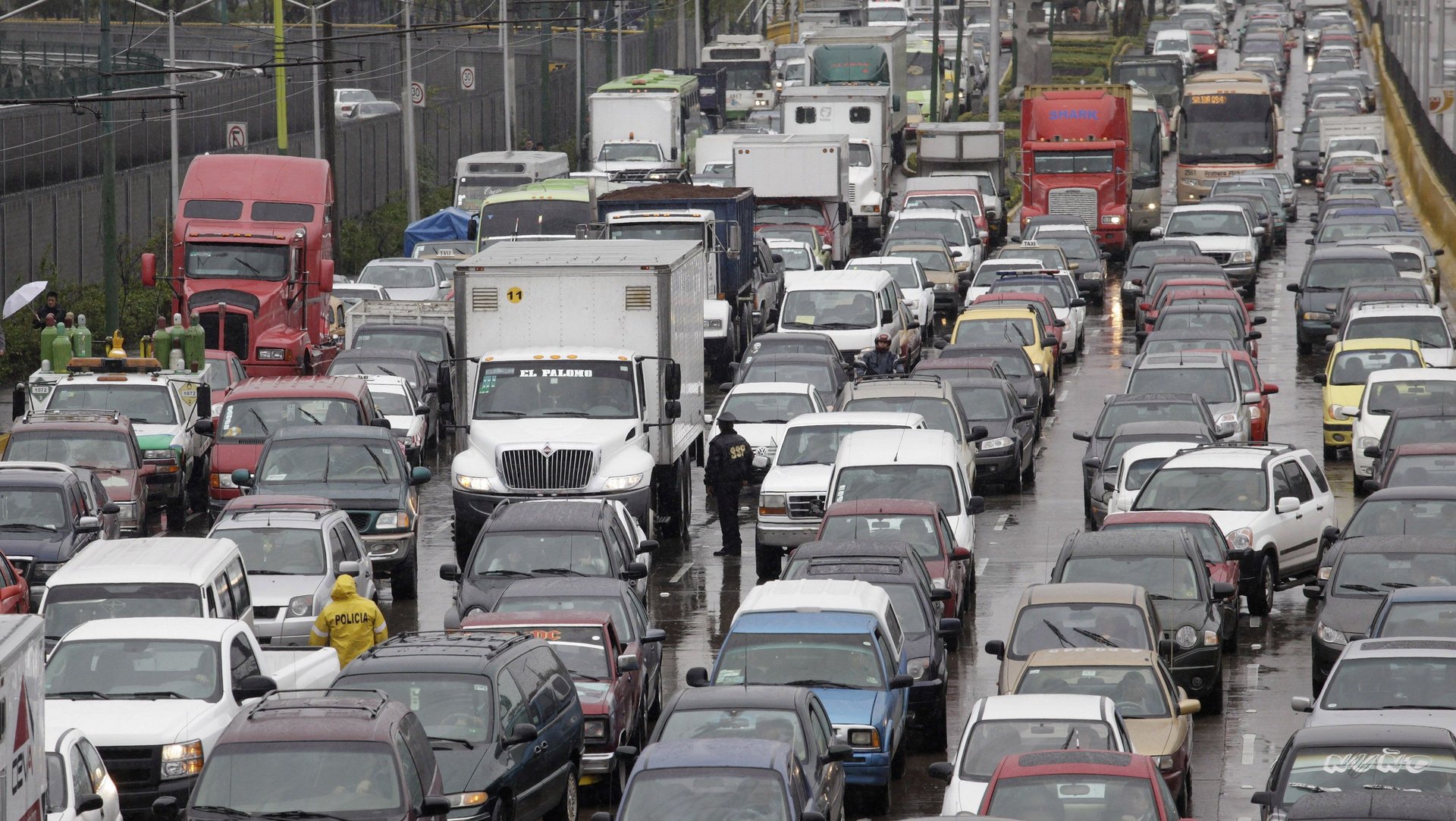Mexico City hopes floating gondolas will beat its appalling traffic
Mexico City officials have an elevated idea about how to deal with the city’s hellish traffic: Hover over it.


Mexico City officials have an elevated idea about how to deal with the city’s hellish traffic: Hover over it.
The city’s science, technology and innovation department, known as Seciti, on Nov. 26 unveiled a prototype (link in Spanish) of an aerial transportation system that would float over the sea of cars, potholes and street protests that regularly disrupt life in the enormous metropolis.
Many residents already use public transit—more than 60% rely (link in Spanish) on the subway or bus, compared to 16% who drive their own car, according to a 2013 survey by Parametría. Still, the city has the worst traffic in the world after Istanbul, according to the TomTom Traffic Index, which measures the extra time it takes to get somewhere due to congestion. In Mexico City, trips end up taking 55% longer than if the streets were clear. In Paris that figure is 35% and New York it’s 31%.
The solution is a kind of elevated monorail, with gondolas that run on a horizontal track, and it could really help unload the city’s crowded streets, officials say. A 5km (3 mile) line could move 37 million people a year—and up to 200 million if it were extended another 10 km. For perspective, the busiest subway line transports around 290 million passengers (Spanish) a year. A computer animation from Seciti shows how it would work:
The gondolas would also make for a more enjoyable and faster ride than a car, bus or the metro. Each one would only seat two passengers, who would set their destination when they board to avoid stopping at every station. Gliding at 15 km per hour, passengers would easily outpace the city’s crawling traffic, which moves at an average speed of 8 kph (Spanish).
Many cities around the world already have aerial transportation, namely cable cars. But most were generally conceived as a way to bridge hilly terrain or as a form of recreation. It’s only more recently that city planners are thinking about them as a way to get around traffic.
Aside from avoiding congestion, cable cars offer other advantages. Building them doesn’t require tearing up big swaths of densely-populated urban land. Their cost is generally well below that of other forms of transit, according to the Gondola Project, a online repository on information about what it calls cable-propelled transit.
The system in Mexico city is not strictly a cable car (Spanish) because it runs on a track and each cabin is equipped with its own autonomous system. Still, officials estimate the price tag for a kilometer of line would be between $9 million and $19 million, compared with $190 million for a kilometer of subway. Running and maintaining the gondolas would also be 40% cheaper than the metro and the city’s rapid bus lines, which run on their own dedicated road lanes.
Now all that’s needed is the money. Officials said during a press conference that both public and private investors will need to pitch in.